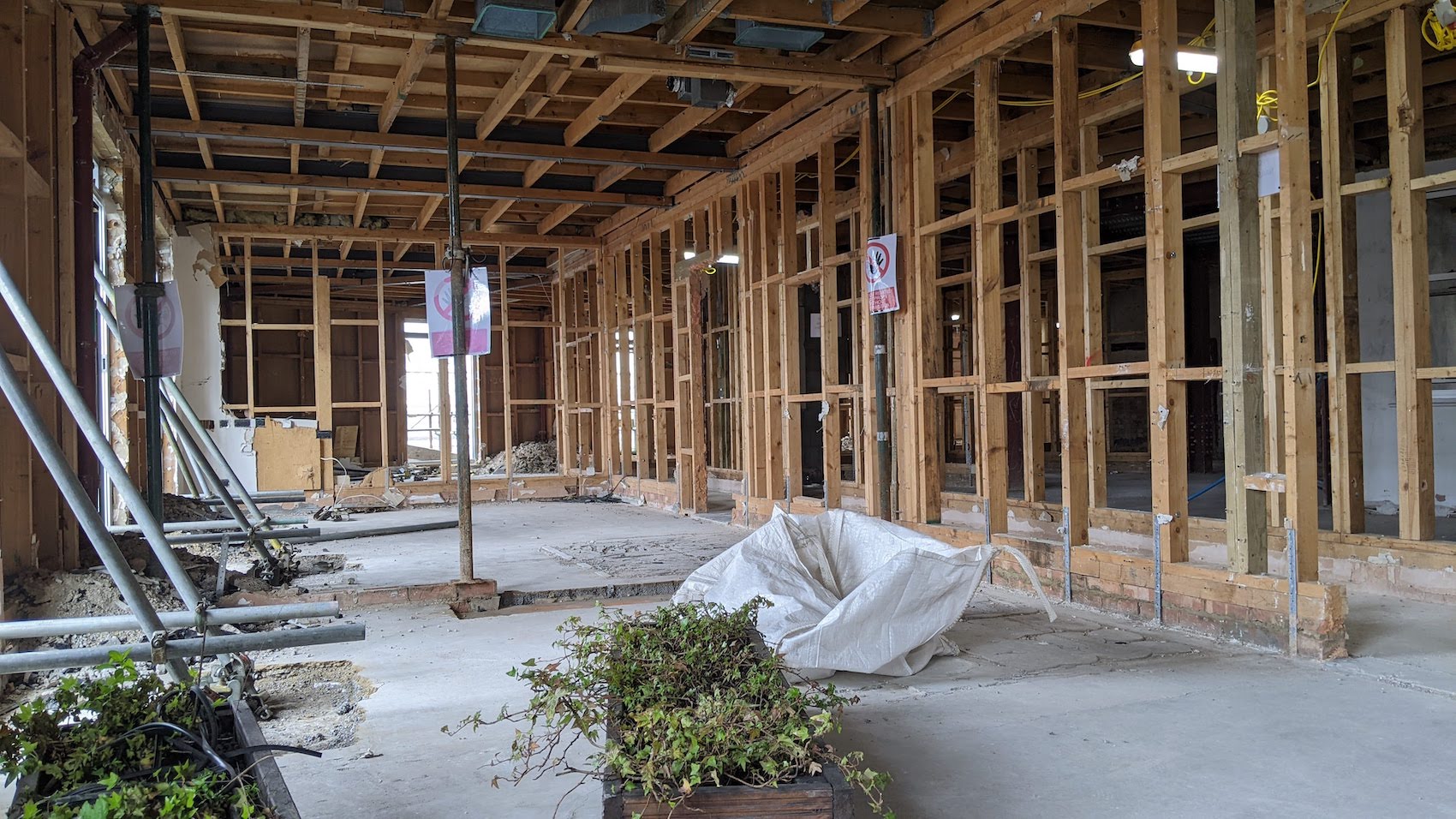Dr Colin Rose, Founding Partner of UK CLT, and Senior Research Fellow at University College London, answers readers’ questions on timber reuse.
Timber from The Westbury Hotel in London was recovered for use in CLST test specimens, with the support of Ramboll and Sir Robert McAlpine (photo: Colin Rose).
Why is it important to reuse constructional timber, considering timber is a renewable and carbon-capturing material?
UK demolition creates more than a million tonnes of waste wood a year, the vast majority of which is burnt as biofuel or downcycled into chipboard and MDF. Chipping timber takes away its structural capacity, and burning it releases back into the atmosphere the carbon dioxide that has been locked away, sometimes for more than 100 years. By keeping timber in use, we can displace the use of other structural materials, and increase the overall carbon storage capacity of the built environment.
How can secondary timber from demolished buildings be reused?
A small percentage is saved and resold through reclamation yards and online marketplaces. This makes sense for timber in lengths suitable for new construction, especially where large, historic sections are recovered. But interest is growing in using wood from demolition to manufacture mass-timber products, such as cross-laminated secondary timber (CLST) and glued-laminated secondary timber (glulamST).
What is the methodology and regulatory framework for classifying reused timber in terms of its strength, stiffness and moisture content?
Strength classes of new wood are based on knowledge of its species and origin. That’s often hard to ascertain for secondary timber. So while we can measure moisture content and density, new approaches are needed to be able to assess and classify secondary timber. Non-destructive methods to estimate stiffness and strength are gaining traction, and research such as ours at UCL has demonstrated that CLST and glulamST of predictable performance can be produced.
Does reused timber lose its strength or any other key performance attributes depending on how many times it is reused?
The number of times it’s used is less important than the loading and environmental conditions it has been subjected to. For instance, fluctuating moisture content through external use can lead to significant strength loss. For softwoods used internally, there is research to show that stiffness and strength can increase over time, and that reductions in strength arise from observable defects, such as nail holes, rather than molecular structure. The impact of those defects, including naturally occurring defects like knots, is lessened through the principle of layering in mass timber.
What are the main barriers to reusing timber on construction projects at the moment?
Confidence of the mass market in using unconventional materials, especially as primary structure, and the cost of labour- intensive processes. Costs will reduce as we scale up, including harnessing technology to make our processes more efficient.
How and where can specifiers currently access reused timber building products?
UK CLT is in the research and development stage, but we’re ready to deliver one-off demonstrator projects. We’re seeking investment to increase our production capacity. Those working on projects in North America benefit from a more mature deconstruction and timber recovery market, which should soon be enhanced by the deployment of the first robotics and AI-powered machines developed by Urban Machine to automate the removal of metal fixings.
How should architects approach the design and specification process when incorporating reused timber into construction projects?
Our goal is to develop products from secondary materials that can be used just as easily as their primary equivalents. They should perform in the same way. If architects want an exposed timber structure to look ‘as new’, it can be planed to a clean surface. But our secondary feedstock also allows us to work with architects to explore mass timber with texture, relief and weathered finishes.
In a circular economy, it’s important for designers to think about long-term building adaptability and disassembly. We are developing a system of modular components in standardised dimensions with reversible connections to allow for future recovery and reuse. This increases the chances that components retain their financial value at end-of-use, and continue to store carbon.
What needs to happen to make the reuse of timber commonplace and widely accepted within the construction industry?
There’s a lack of information about materials that will emerge from demolition and deconstruction sites. We need thorough, mandatory pre-demolition audits, along with digital platforms to share that information publicly at city level. That will enable reuse to be properly considered across all material groups, rather than treating building components as waste.
Given the climate, biodiversity and social crises that must be addressed, we can expect policy and legislative changes that favour the use of secondary materials. We’re greatly encouraged by the steep growth in steel reuse in London, and we think timber will be next. There are still questions that remain, as with steel. But as experience with secondary timber is gained, codes and guidance will catch up to provide further confidence to specifiers. To drive this forward, we would love to hear from progressive clients and designers who want to see what’s possible with these innovative circular materials.
For further information, please visit www.ukclt.com
Source: Architecture Today

